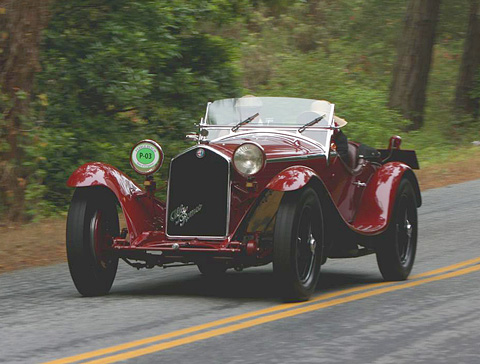
David and Ginny Sydorick have a soft spot for Zagato coachwork. This Alfa Romeo 8C 2300 Zagato Spyder is a fine example of that bodybuilder’s touch. It is the oldest car in the Sydorick’s significant collection of Zagato-bodied cars.
Text and Captions by Michael T. Lynch
Photos front, Dale LaFollette (Vintage Motorphoto)
Photos rear and side, Hugues Vanhoolandt
The Pebble Beach Concours d’Elegance did not become the greatest car show in the world by resting on its laurels. In 1998 the organizers added the Pebble Beach Tour d’Elegance as an ancillary event to the Concours itself. The idea was partially motivated by continued withering criticism of Pebble Beach from the British and Continental motoring press in the 1990s that often commented on over-restored cars at Pebble Beach and judging criteria that placed too much emphasis to cleanliness.
Pebble Beach had always insisted on the operability of all a competing car’s systems, but
the organizers wanted to get the cars on the road and dispel the notion that the entrants were trailer queens – cars that were taken from show to show in trailers and never driven. The route chosen included many scenic vistas that had long been traditional venues for auto touring in the region.
To encourage the Concours entrants to also participate in the Tour, it was decided that if two cars tied for a class win and one participated in the Tour and the other didn’t, participation in the Tour would be a tie breaker. The strategy worked and ultimately revolutionized the American concours world. Other shows joined Pebble Beach in marking down cars that had been over-restored. Pebble Beach itself later introduced classes for unrestored cars and this practice too was followed by many of the most prestigious concours.
Today, the Pebble Beach Tour d’Elegance presented by Rolex is regarded as a watershed in encouraging the use of collector cars on the road no matter how rare or expensive. VeloceToday is happy to share images of a selection of French and Italian automobiles that took part in this year’s tour.
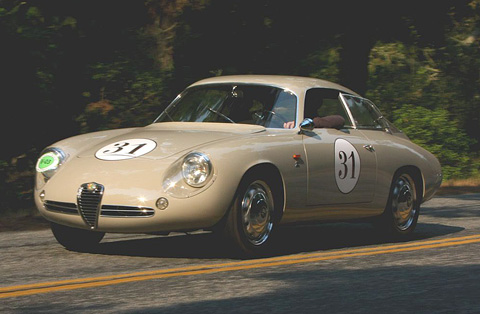
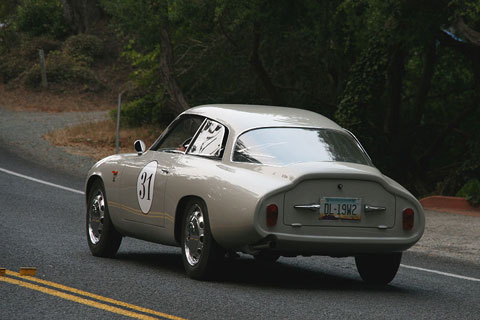
Scott and Courtney Gauthier’s Alfa Romeo Sprint Zagato is a rare Coda Tronca model with the abbreviated rear end.
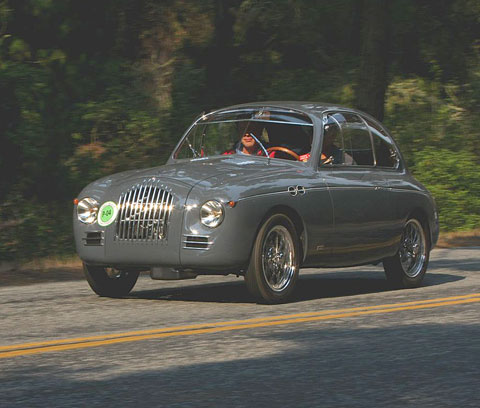
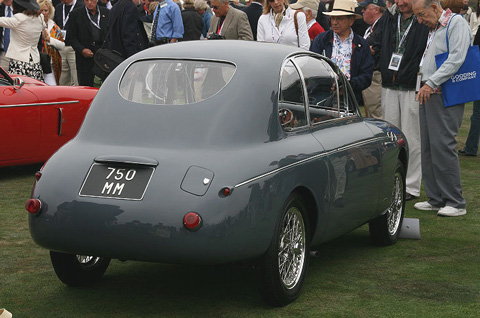 Another Zagato from the Gauthier collection is this Fiat Topolino 750MM Panoramica Coupe, one of Zagato’s most whimsical designs. It was second in the Zagato-90 Years of Design Class and won the Mille Miglia award.
Another Zagato from the Gauthier collection is this Fiat Topolino 750MM Panoramica Coupe, one of Zagato’s most whimsical designs. It was second in the Zagato-90 Years of Design Class and won the Mille Miglia award.
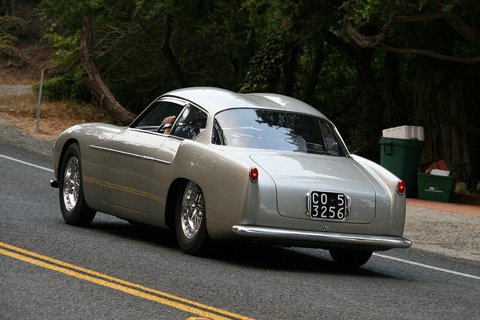
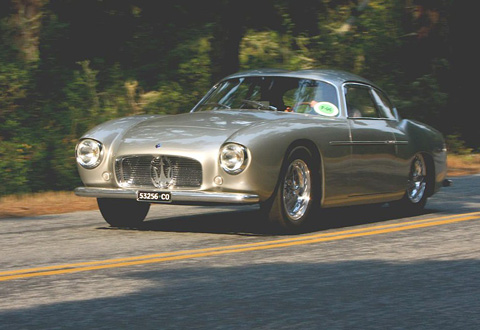 J. Roberto Quiroz Maserati A6G/54 Zagato Coupe came from Mexico to take a third in the Zagato Class. Note the signature Zagato double bubble roofline.
J. Roberto Quiroz Maserati A6G/54 Zagato Coupe came from Mexico to take a third in the Zagato Class. Note the signature Zagato double bubble roofline.
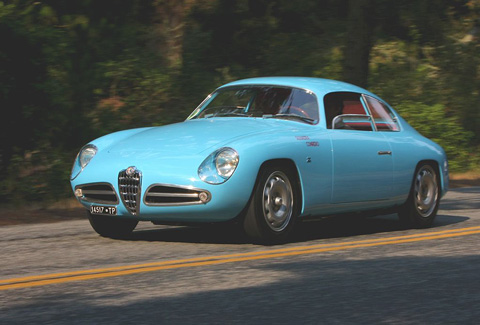
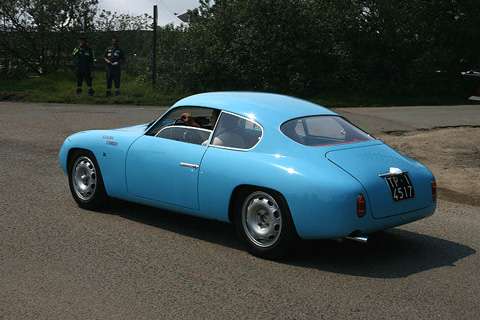 This SV Berlinetta of Franco Meiners was another variation on the Zagato Alfa theme. It was tuned by Alfa wizard Virgilio Conrero and still lives in its homeland.
This SV Berlinetta of Franco Meiners was another variation on the Zagato Alfa theme. It was tuned by Alfa wizard Virgilio Conrero and still lives in its homeland.
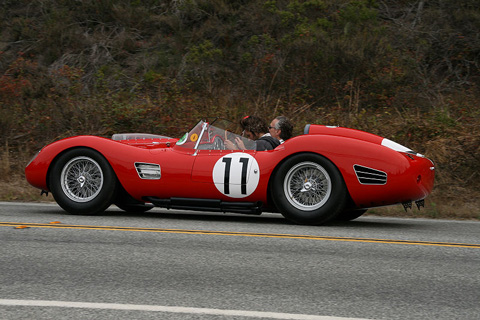
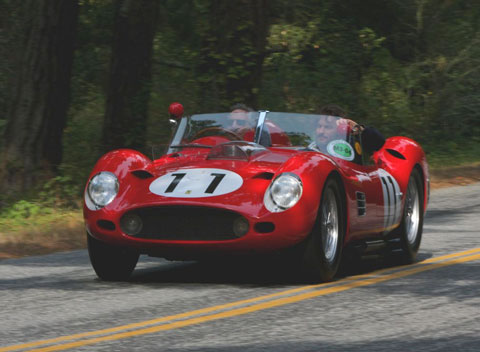 Bruce Meyer is the car guy’s car guy, which is the reason he got the ride of the week in Chip Connor’s Ferrari 250 TR 59/60 Fantuzzi roadster. This car won at Buenos Aires and Le Mans in 1960. As the owner of the ex-von Neumann Ferrari V-12 TRC hot rod, Bruce has a feel for Ferrari 12C competition cars
Bruce Meyer is the car guy’s car guy, which is the reason he got the ride of the week in Chip Connor’s Ferrari 250 TR 59/60 Fantuzzi roadster. This car won at Buenos Aires and Le Mans in 1960. As the owner of the ex-von Neumann Ferrari V-12 TRC hot rod, Bruce has a feel for Ferrari 12C competition cars
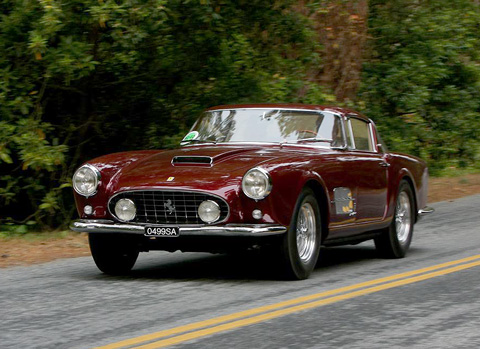
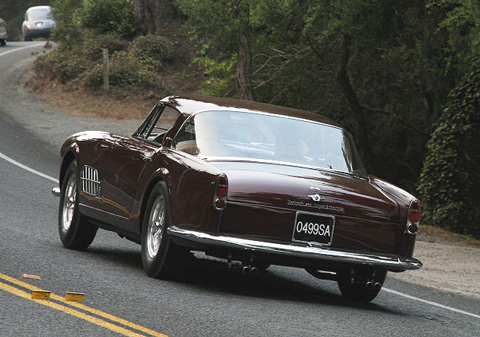
John La Barbera and Lynn Gabriel’s Ferrari 410 Superamerica Pinin Farina Coupe was a real King of the Road in its day. Priced at almost a 50% premium to the rest of the Ferrari line, this 4.9 liter Gran Turismo was intended for heads of state, industrialists and film stars. It impressed the crowd, winning the People’s Choice Award.
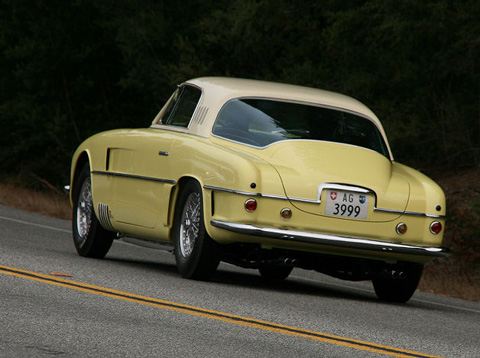
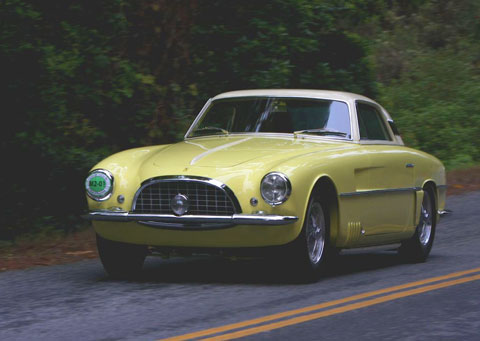 Heinrich and Magdalena Kaempfer’s Ferrari 375 America Vignale Coupe has been seen in all the right places this year, including on the winner’s ramp at Pebble Beach in the Ferrari GT/Competition Class. It was also awarded the Enzo Ferrari Trophy.
Heinrich and Magdalena Kaempfer’s Ferrari 375 America Vignale Coupe has been seen in all the right places this year, including on the winner’s ramp at Pebble Beach in the Ferrari GT/Competition Class. It was also awarded the Enzo Ferrari Trophy.
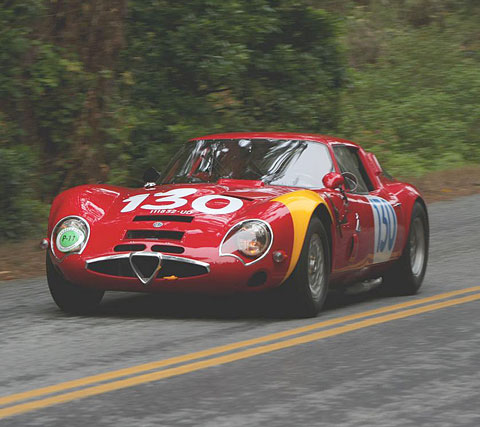
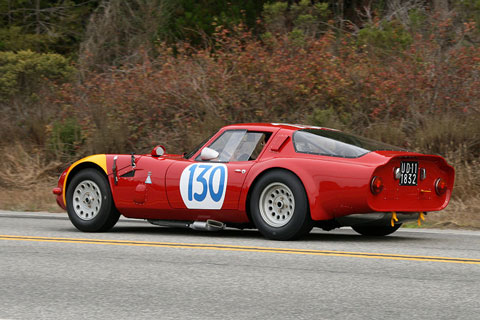 One more Zagato. This one is the William Lyon Family’s Alfa Romeo TZ2 Berlinetta. It was the cover car for the Pebble Beach Tour guide that is handed out to spectators along the route and won the Gran Turismo Award.
One more Zagato. This one is the William Lyon Family’s Alfa Romeo TZ2 Berlinetta. It was the cover car for the Pebble Beach Tour guide that is handed out to spectators along the route and won the Gran Turismo Award.
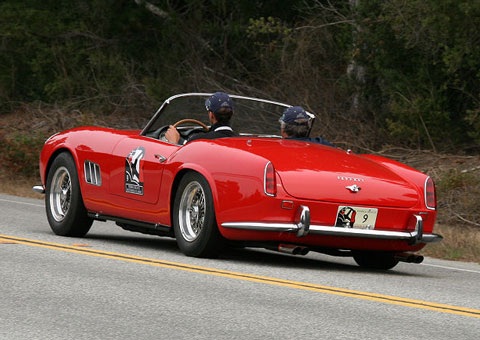
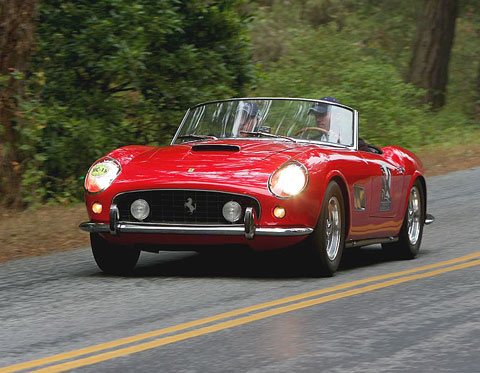 Joe Moch’s Ferrari 250 GT SWB California Spyder keeps the headlights on in the coastal gloom.
Joe Moch’s Ferrari 250 GT SWB California Spyder keeps the headlights on in the coastal gloom.
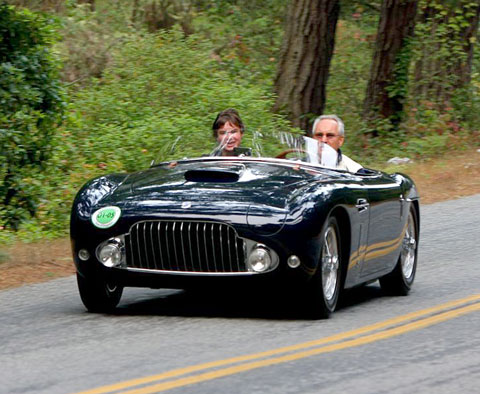
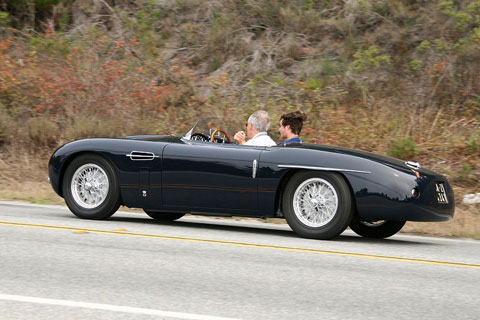 David Smith’s absolutely flawless Siata 208CS Stabilimenti Farina Spyder not only won the Postwar Sports Class, but was nominated for Best of Show.
David Smith’s absolutely flawless Siata 208CS Stabilimenti Farina Spyder not only won the Postwar Sports Class, but was nominated for Best of Show.
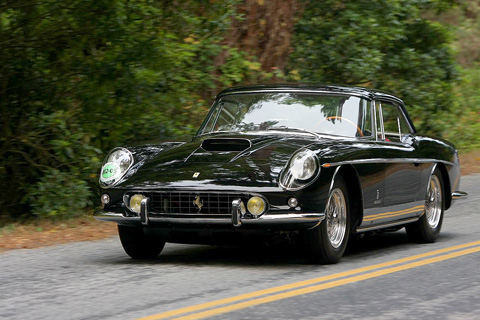
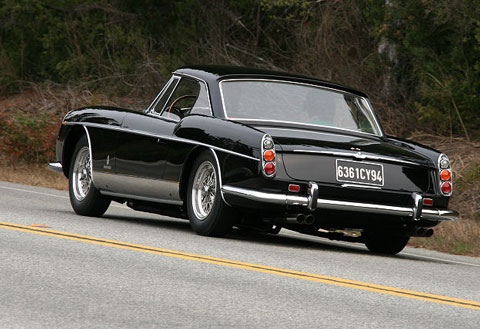 Bill Grimsley’s Ferrari 400 Superamerica Pininfarina Coupe was third in the Ferrari GT class at the Pebble Beach Concours.
Bill Grimsley’s Ferrari 400 Superamerica Pininfarina Coupe was third in the Ferrari GT class at the Pebble Beach Concours.
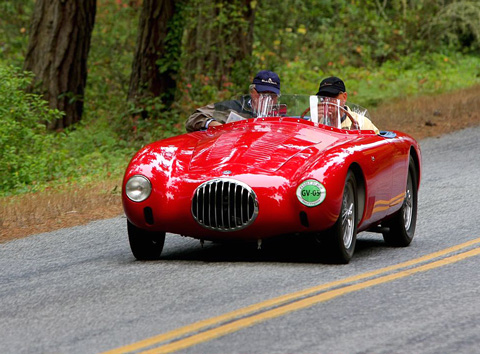 Long-time Pebble Beach entrant and volunteer Craig Davis entered his OSCA MT4 Morelli Spyder on the Tour. The car was also part of a Stirling Moss 80th Birthday Celebration display. These cars dominated under 1500cc sports car racing in the early 1950s. The author remembers his MT4 with a combination of fondness and financial regret.
Long-time Pebble Beach entrant and volunteer Craig Davis entered his OSCA MT4 Morelli Spyder on the Tour. The car was also part of a Stirling Moss 80th Birthday Celebration display. These cars dominated under 1500cc sports car racing in the early 1950s. The author remembers his MT4 with a combination of fondness and financial regret.
I love Scott Gauthier’s Fiat 750- Zagato Panoramica. Unfortunately (for me), these 750 and 1100cc Etceterinis are now worth $200K or more. I rember when they could have been bought for $5K all day long..
It’s good news that a Siata was nominated for best of show. The bad news is that a Göring’s Horch was preferred.
We are pleased that the word is spreading re the judging at Pebble Beach. Cars are meant to be driven. We do not deduct for evidence of use, but we do deduct for over-restoration. The driving tour and the preservation classes help promote this. The Horch was over the top for a German car, but it is as built and the judges clearly gave it the most votes for Beat of Show.
I enjoy these pictures,(and the erudite commentary added by readers) though when shot through a extra long telephoto lens, it makes cars look a little different than their builders probably intended–sort of “condensing” them a bit. Grimsley’s 400SA from the rear 3/4 is a case in point. It looks festooned with chrome! On the other hand the shots that are more side views of cars, like of the Siata, look more “normal” . I once used to shoot with a Hasselblad 500C and 500 mm lens but it weighed too much to take the occasional “compressed” shot so I’m back to a mild wide angle.
Well Stu, 250 SWBs were under $5,000 for years, GTOs didn’t reach $10,000 for years later. Pf Coupes were $1500 for years later still. They were considered a box of parts on a set of nice wheels. You had your chance. We have all missed some chances. Fortunately we took some too.